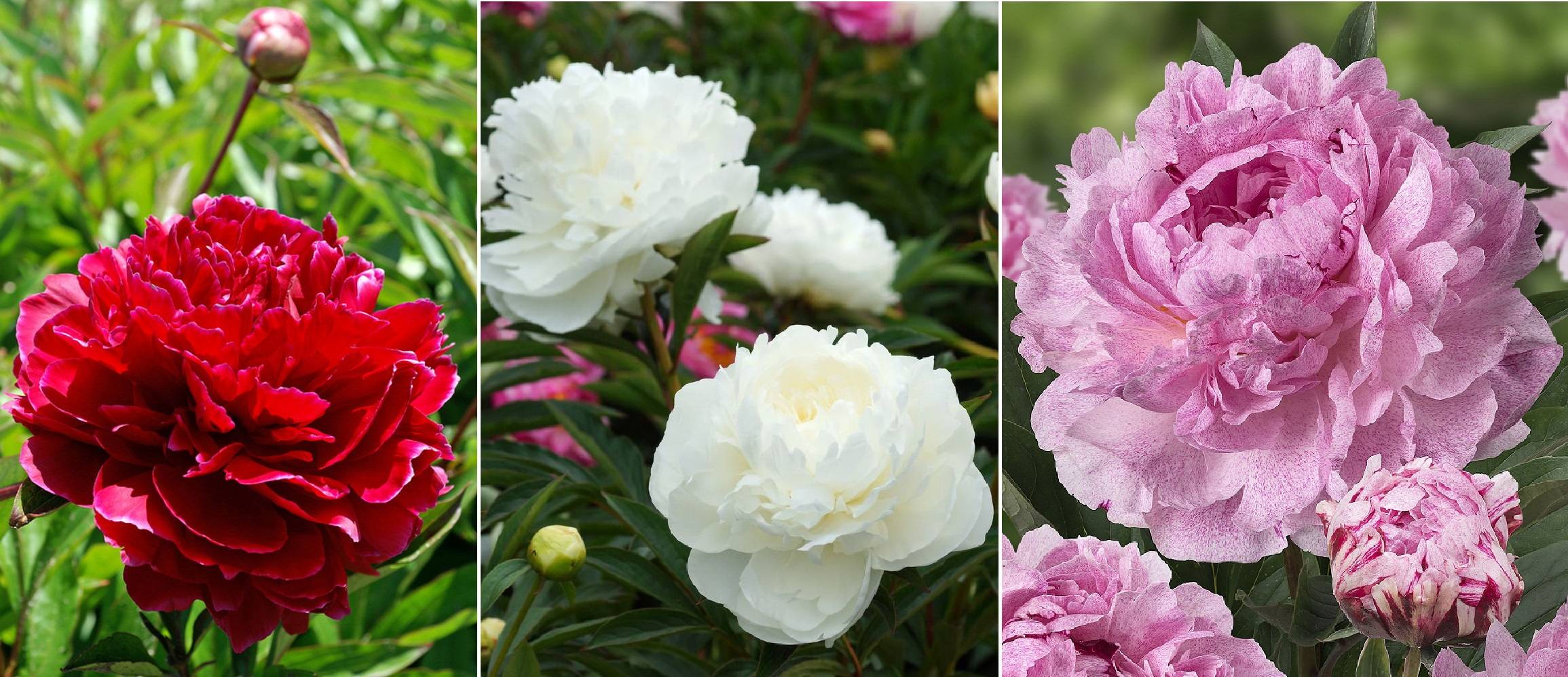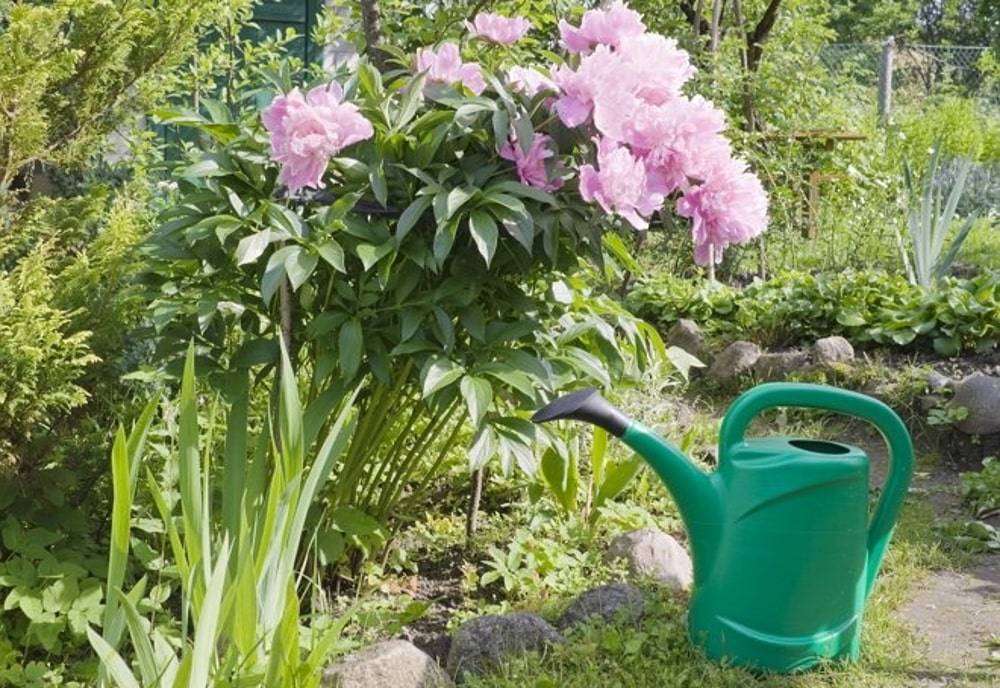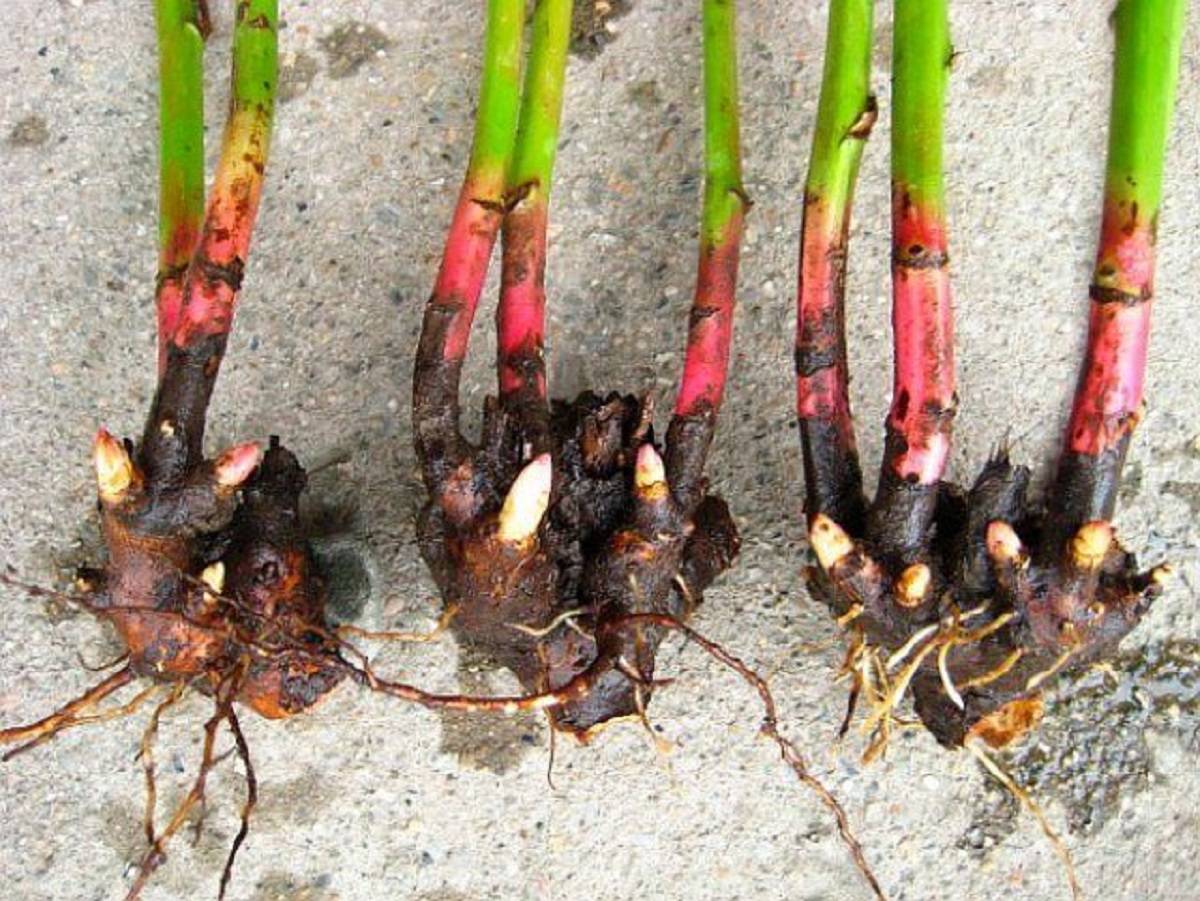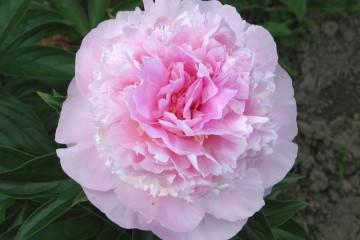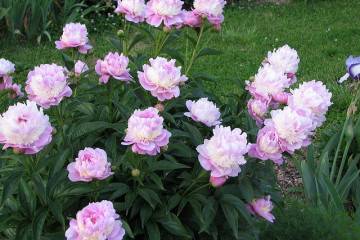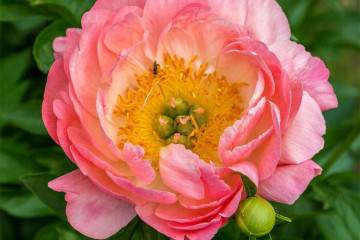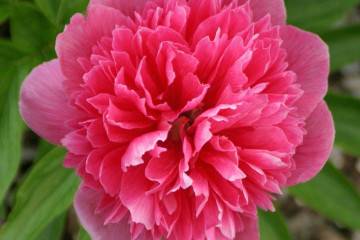Peony Sarah Bernhardt (Paeonia Sarah Bernhardt)
Content:
Knowing how to properly grow the classic peony variety Sarah Bernard, you can decorate any garden and backyard with its lush bushes. With proper care, large spherical flowers will attract attention during flowering.
Peony Sarah Bernhardt (Paeonia Sarah Bernhardt) - what is this variety, history of creation
The peony variety Sarah Bernhardt (Paeonia Sarah Bernhardt) was created in 1906 by a French breeder Pierre Louis Lemoine. The author was the owner of the highest award of his country - the Knight of the Legion of Honor. He gave his next creation the name of a famous actress, whose talent he admired.
Advantages and disadvantages of the variety
This variety belongs to the group of herbaceous lactic-flowered peonies (Paeonia Lactiflora). Bushes form sturdy stems about 1 meter tall, capable of supporting the weight of heavy inflorescences. The leaves are openwork, dark green. Detailed description: flowers are densely double, pink-shaped, reach a diameter of 20 cm, painted in pearl-pink color with a slightly lighter border.
Use in landscape design
Peonies Sarah Bernhardt are often planted as part of compositional groups, combining with irises and bells. The variety of flowers with white buds looks great next to poppies, daylilies and sage. Baskets of all colors will look luxurious against the background of thuja or barberry bushes, as well as against the background of a smoothly trimmed lawn. But when choosing companion flowers for Sarah Bernhardt, you should avoid overgrowing plants that will take food from the peony or block it from light.
The varieties most popular with gardeners
Since the inception of the variety, many varieties have been bred. But some subspecies of Sarah Bernhardt can be found on personal plots more often than others.
Red Sarah Bernhardt
The peony bushes Red Sarah Bernhardt are slightly smaller than the original variety - they grow up to 85 cm. The flowers consist of many bright red petals and have a pleasant aroma.
White Sarah Bernhardt
The snow-white White Sarah Bernhardt flowers with a subtle lemon tint found their way into wedding bouquets and compositions. Their peculiarity is that they are smaller (only 15 cm in diameter) and differ in a variety of shapes. Most often, the flowers of the White subspecies are spherical or pink-like.
Sarah Bernhardt Unique
Sarah Bernard Unique flowers are characterized by a mauve color. They look great in landscape compositions and as a cut.
How to properly plant and grow a flower in the open field
Peonies can be called unpretentious flowers, if only they are planted in a suitable place in compliance with all requirements. The decorativeness of the plant largely depends on the observance of the rules of procedure.
Planting by root cuttings
Planting root cuttings is the most effective way to propagate the Sarah Bernar shrub. To do this, the plant is dug up, the stems are cut to a height of 10 cm and carefully divided into approximately equal fragments.
What time is the boarding
The procedure is carried out at the very end of August or at the beginning of September. This is the best time for the plant to adapt to a new place before the onset of cold weather.
Location selection
Sarah Bernhardt peony can grow in one place for decades, so it is very important to find a suitable site. The space should be well lit, but protected from direct sunlight. The soil is required to be loose and light, with a slightly acidic reaction.
How to prepare the soil and flower for planting
The area with an acid reaction, where it is planned to plant peonies, is recommended to be limed with dolomite flour. The earth is well dug up in advance, bringing in river sand and organic matter. Delenki before planting must be treated with potassium permanganate and kept in a growth activator, the sections are sprinkled with wood ash.
Planting procedure step by step
When planting peonies in the ground, they adhere to a certain sequence. Be sure to follow these steps:
- Dig a hole of a suitable size.
- A drainage layer is poured at the bottom, covering it with a layer of nutrient soil.
- The planting division will be hindered into the pit, deepening the buds no more than 5 cm, and carefully sprinkle it with earth.
- The seedling is watered and the soil around it is mulched.
When planting several bushes, it is important to leave a distance of at least 1 meter between them.
Seed planting
Seeds are planted exclusively for breeding purposes. In all other cases, this method does not justify itself, since the plants differ in characteristics from the parent specimens. Seeds are planted directly into open ground, creating greenhouse conditions.
Plant care
If the peonies are properly looked after, then from year to year they will delight with lush flowering. At the same time, agricultural technology is quite simple and does not require special actions, except for watering, fertilizing, weeding and loosening.
Watering and feeding
The bushes of Sarah Bernhardt are watered once a week during the budding period, the rest of the time - as the soil dries out. In the first years after planting, there is no need to fertilize peonies. Starting from the third year of life, each bush is sprinkled with horse manure in the spring, watered with a solution of bird droppings in the summer, and fertilized with superphosphate in the fall.
Mulching and loosening
After 1-2 days after watering, the soil is gently loosened. To retain moisture, the trunk circle is mulched with dry grass or wood chips. Leaves and straw are not recommended.
Preventive treatment
Blooming profusely, Sarah Bernhardt always attracts many pests. To scare off parasites, in the spring time the bush is sprayed with fungicides (Fitosporin-M, Maxim, a weak solution of potassium permanganate), and the earth in the trunk circle is watered with Bordeaux liquid.
Peony Blossom Sarah Bernhardt
Peony Sarah Bernhardt is distinguished by its late flowering dates. The bush begins to dissolve lush, densely double flowers, when wilted petals are already flying around from other varieties.
A period of activity and rest
Flowering begins in late June or early July. With proper care, the baskets continue to decorate the bush for 30-45 days.
Care during and after flowering
Although the cultivar has very strong stems, it may sometimes require support to prevent them from breaking. To prolong flowering, wilted flowers should be removed immediately.
What to do if it does not bloom, possible reasons
Sometimes Sarah Bernhardt's peony may not bloom in due time. This is due to the following factors:
- location in the shade;
- acid reaction of the soil at the planting site;
- violation of the rules for pruning shoots;
- lack of nutrients;
- infection with diseases or pests.
Peonies after flowering
You can transplant the bush only when it has completed flowering. In this case, it is imperative to divide it into several parts, otherwise it may wither.
Transfer
The procedure is performed in September-October, after cutting off the stems to a height of 10-15 cm. The transplant is carried out only in dry warm weather, removing the bush from the soil with a root ball.
Pruning
Pruning of peony bushes is carried out only in the fall, in October. At the same time, the leaves are cut almost to the very ground, which serves as the beginning of preparation for the winter period.
Preparing for winter
Sarah Bernhardt's bushes are hardy and adapted to survive in harsh conditions. However, in regions with very cold winters, it is advisable to shelter young plants. To do this, after the autumn pruning, the peonies are mulched with compost or humus, covered with cut leaves.
Diseases, pests and ways to control them
Sarah Bernhardt has good immunity to many diseases typical of peonies. Sometimes the flower can develop rust, gray mold or mosaic. Of the pests, bronzes, aphids, ants can be dangerous. They are saved from them with folk remedies and insecticidal preparations. Any problems are the result of errors in planting or care, therefore, the best prevention is adherence to agricultural practices.
Thanks to the rich palette of shades of varieties of peony Sarah Bernhardt, the flower is very popular with flower growers. He is able to decorate any area with his lush baskets, turning it into a fabulous corner.

